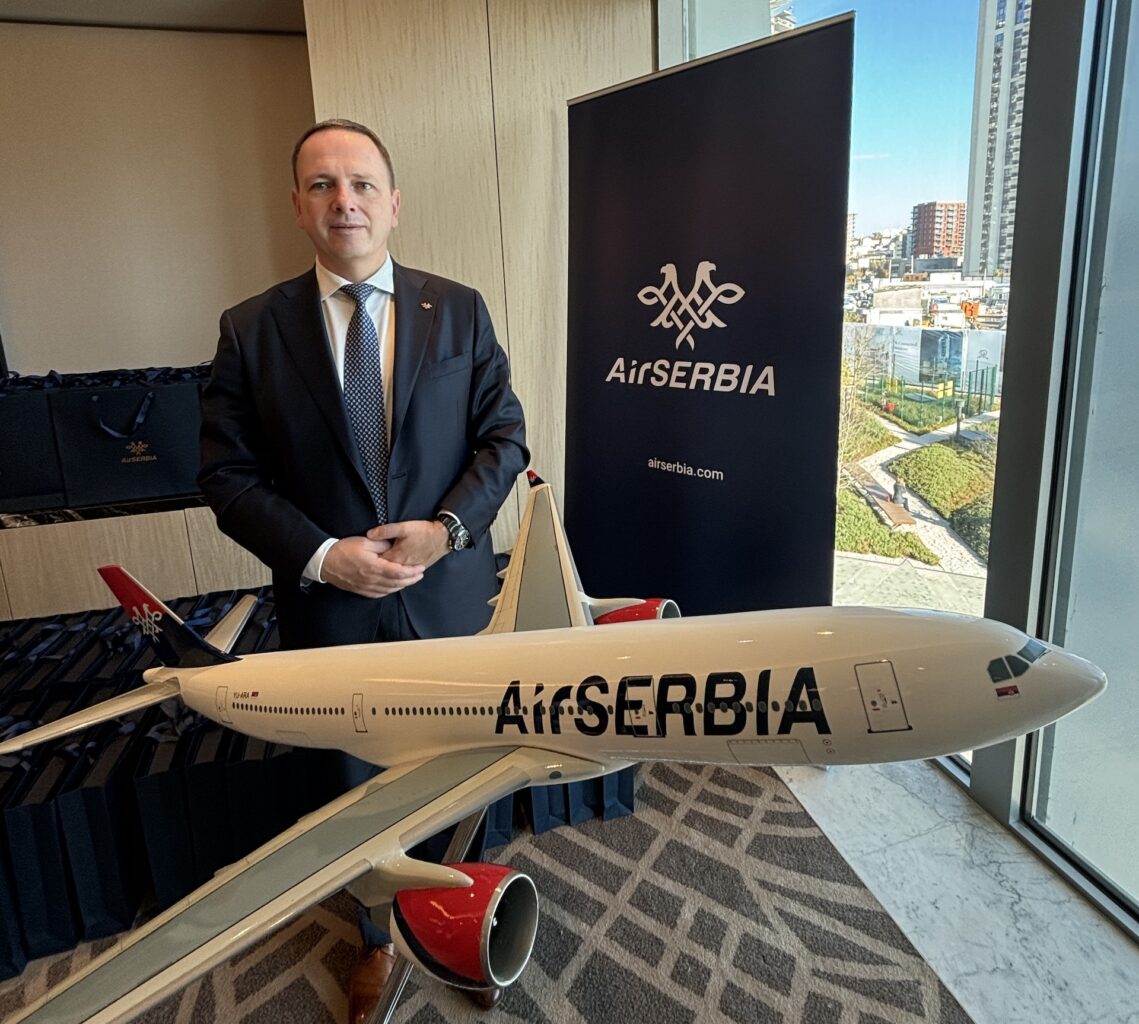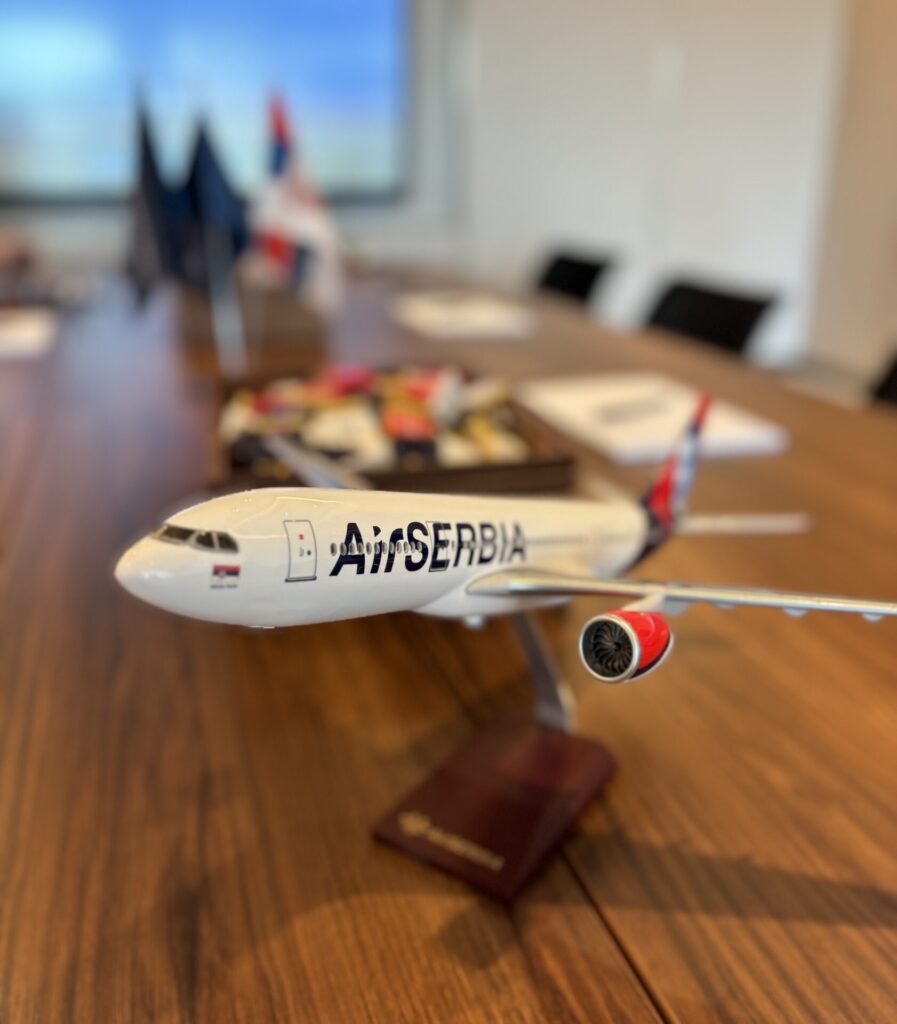The emergence of Air Serbia as a major player in eastern Europe is perhaps one of the most interesting recent developments in the continent’s commercial aviation scene.
Back in 2023, AeroTime sat down with Air Serbia’s CEO Jiri Marek for an in-depth interview where he provided some insights into the airline’s newfound success and plans.
This time AeroTime caught up with Marek at the CAPA Airline Leader Summit, which gathered top aviation industry executives from a large number of carriers in Belgrade, Serbia on November 21 and 22, 2024.
First, Marek said that the Serbian flag carrier is on track to close another profitable year (in 2023 the airline posted a €40.5 million profit, approximately US$42.5 million).
With only a few weeks left in 2024, Marek was able to confirm that strong demand in the second and third quarter of 2024 has already compensated for a much weaker first quarter.
He attributed the relatively poor performance in the first quarter of 2024 to the market reverting to its normal seasonal patterns following two years where post-pandemic “revenge travel” boosted leisure traffic.
“We kind of returned back to normality and seasonality,” Marek stated.

Expanding the long-haul fleet
In fact, Air Serbia is using the winter months to boost its long-haul capacity with the arrival of a fourth Airbus A330, which, at the time of the interview, was undergoing maintenance in Germany and was expected to be delivered before the end of 2024.
Marek also explained that the three A330 aircraft already operated by Air Serbia are enough to sustain the airline’s current route network, which includes New York (JFK) and Chicago O’Hare (ORD) in the United States, and Guangzhou (CAN) in China, as well as the addition of Shanghai-Pudong (PVG) as a new destination in early 2025.

This fourth A330 aircraft will primarily be used as a spare and will help cover for planned maintenance downtime on the other three aircraft. It will also be available for ad-hoc charter services, such as the one operated by Air Serbia in October 2024 between Tokyo (NRT) and Belgrade (BEG), carrying a Japanese business delegation which attended the Serbia-Japan Business Forum.
“We have lots of requests for those charters, but we never have free capacity because of our long-haul operations,” Marek explained.
“For an airline of our size to go from one widebody to four in basically two years is massive growth, which means that we also need some time for the pilots to be able to accumulate enough experience,” he added. “Then we can start to use this fourth aircraft.”
“But we do not want to use it fully,” he said. “We want to always have some spare capacity.”
The fleet strategy
Air Serbia also plans to continue expanding its short-haul capacity. The carrier received its 10th ATR turboprop in June 2024 and is planning to add one more Embraer E195 in the first half of 2025.
“Then it will depend on what we find on the market because we will not take aircraft just to take more aircraft,” he said. “But if we find some good opportunity. These will be either A320s or Embraers.”
Marek also confirmed that, when it comes to capacity expansion, the preference going forward will be for dry leases. Air Serbia has often opted for wet leasing aircraft when it needs to add capacity. For example, Air Serbia has agreements with both Lithuanian ACMI carrier GetJet, which provides A320 aircraft, and Bulgaria Air, which operates Embraer aircraft on behalf of the Serbian flag carrier.
Regarding the latter, Marek explained how wet leasing contracts have provided Air Serbia with an opportunity to evaluate the Embraer jets as a replacement for the carrier’s current Airbus A319 fleet.
In particular, Bulgaria Air offered the Serbian flag carrier the opportunity to continue its transition towards the Embraer E190/195 after Air Serbia decided to discontinue its contract with Marathon Airlines, its previous ACMI provider, following a rather serious incident in February 2024 at Belgrade.
“Because of what happened we decided [that] we had enough data to see that the Embraer is the right aircraft for our fleet and change the A319s,” Marek said. “It’s only that we had to decide faster than we originally planned and, since it’s a new aircraft type fleet, we could not go immediately from zero to five or six units.
“We had to start gradually,” he continued, adding that in order to make the transition to a larger fleet, Air Serbia “went with Bulgaria Air to cover the remaining Embraer operations.”
Upgrading the passenger experience
When asked about the performance of Air Serbia’s business class on its long-haul routes to the US and China, Marek explained that high-end leisure rather than corporate travelers were the main customers of the service. He also revealed that the airport upgrade service is working well.
When it comes to the US market, demand is driven in great part by diaspora traffic, not just from Serbia, but from the whole Balkan region.
Marek revealed that around 80% of demand on its Chinese routes originates in China, where Air Serbia works with a number of local travel agents and distribution platforms.
He conceded that the airline’s premium long-haul “hard” product might be a bit outdated. Its A330s are still fitted with a legacy Etihad Airways cabin, which was subsequently left in place by Air Belgium, the next airline to operate them prior to their transfer to Air Serbia. However, the airline will also need to work on this, Marek added. He also said he was not ruling out the possibility of changing the cabin layout and configuration later.
“We are still deciding which solution will be the best in terms of timing and the cost,” he explained.
In the meantime, Air Serbia is working on some other aspects of the passenger experience. For example, Marek also mentioned efforts to upgrade the inflight food offering, an area in which, he said, he was not fully satisfied with the existing suppliers.
Marek complained about the market dynamics in those segments of the value chain where there is little or no competition.
He highlighted a recently established joint venture with Menzies to take care of ground handling at Belgrade Nikola Tesla Airport (BEG). This move was motivated by what Marek deemed to be an unsatisfactory service situation with the previous supplier. Other similar joint ventures may follow as the airline takes a more pronounced interest in ensuring quality throughout the supply chain, he added.
Air Serbia is also investing in a larger, brand-new lounge at Belgrade airport, which Marek expects will be ready before the 2025 summer season, while also rolling out premium check-in areas and a new service center.
Marek explained that Air Serbia is also evaluating options to revamp inflight entertainment aboard its aircraft. The airline has already run a pilot test with Bluebox, a wireless inflight entertainment (W-IFE) provider, although the jury is still out when it comes to the narrowbody fleet.
“There are multiple options in the market, we are looking into it and will decide in which direction we will go,” Marek said adding that pickup rate had not been as high as expected.
He continued: “It’s nice to have, but we’ve been a bit surprised. We tested it on the A320s and the ATRs and, surprisingly, ATR had better pickup rates while operating shorter flight. That was a bit surprising. Honestly, I don’t know what the reasons are.”
The case for adding W-IFE to the long-haul fleet, which is currently fitted with a traditional seatback entertainment system (provided by Panasonic and, in the case of one of the aircraft, by Thales) seems to be more straightforward.
“We are definitely looking to implement it [W-IFE] in the A330s as a kind of backup version in case there is some problem with the IFE system,” he said. “Actually, with this system you have more choices than in the classical one. So, for the A330s we are definitely looking at it and most likely we will go ahead.”
However, the airline has no plans to introduce internet connectivity. Air Serbia has offered inflight internet access in the past, but uptake was below 3%, Marek said, so, the low volumes hardly justified the cost.
“It’s a nice PR,” he said, adding that, right now, he does not think the availability of internet access is a key factor when travelers make choices.
Watch the video below to find out more.

